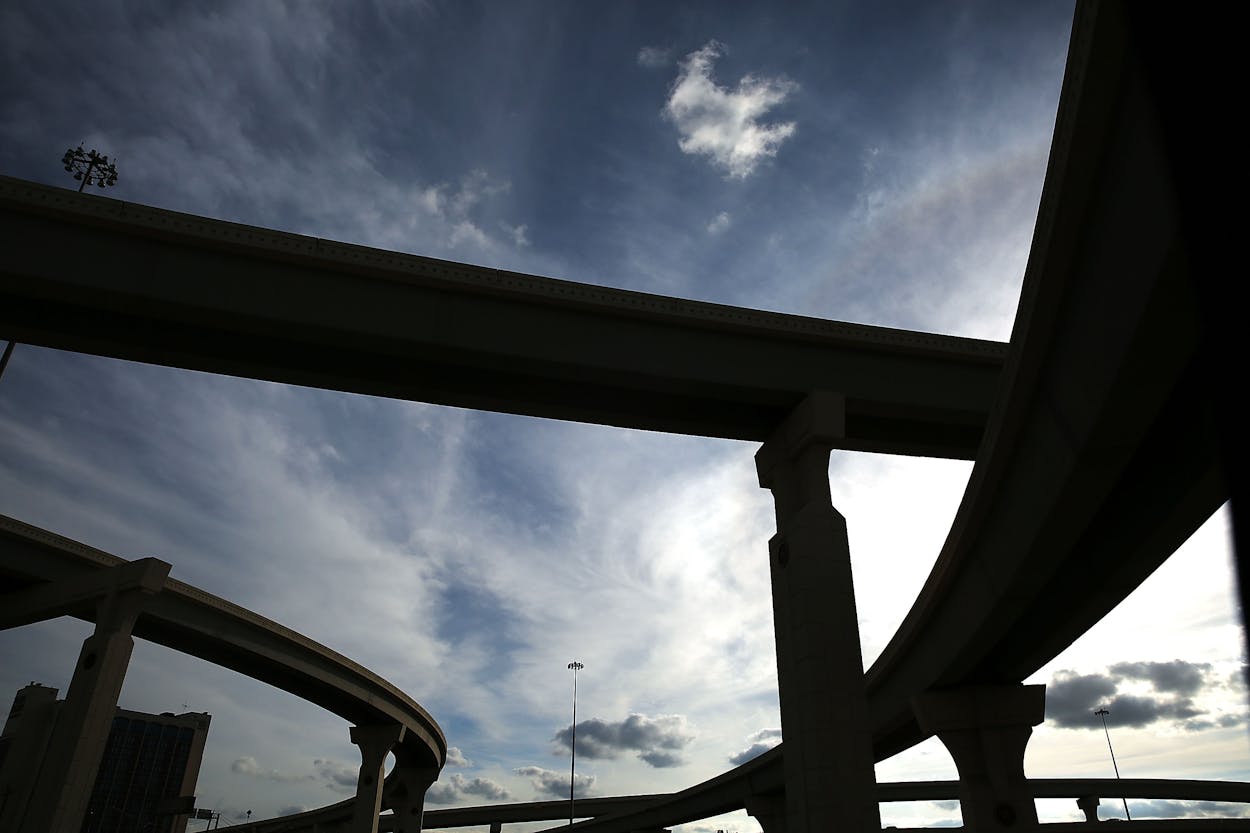Houston personal injury attorney Brian White has sorted a vast array of car crash data into a series of charts that, though visually stunning, make for sobering examination. They also would seem to indicate that Houstonians are, in fact, the state’s worst drivers.
Using TxDoT crash data spanning 2012 through 2015, White teamed up with data visualization company onepoint21 interactive to come up with a list of the 279 most dangerous intersections in Texas. Each of these crossroads was the scene of 40 or more crashes.
No fewer than 19 of the top 50 (and each of the top three) most dangerous intersections in Texas involve the second of Houston’s three loop roads—the Sam Houston Parkway, also known as Beltway 8.
With 335 crashes and 263 injuries, its intersection with Bissonnet Street scored 1,124, a whopping 352 points ahead of second-place Hardy Road/Sam Houston, which just edged out Westheimer/Sam Houston. Along with Westheimer and Bissonnet, ten intersections along the western portion of Beltway 8 made the top 50, which is four more than the list for the entire Metroplex. All told, those 19 Beltway 8 intersections racked up up roughly 2,700 accidents and 2,000 injuries, including five deaths.
That Bissonnet intersection, along with most others along the Beltway, is somewhat atypical as intersections go, according to Houston personal injury lawyer Daragh Carter. “You’ve got that huge overpass, and there are two feeder roads, each controlled by different sets of lights,” he says. “So if you run that first one [on Bissonnet], if the lights are synced, and they usually are, you are probably going to run the second set too, even if you are flying.”
Loop 1604, the second of San Antonio’s two ring roads, figures in the three non-Houston slots in the top 10. It’s intersections with I-10, Braun, and Bandera were the scenes of about 650 crashes, roughly 370 injuries, and one death.
Lubbock’s Loop 289/Slide Road edges out anything in the Metroplex, coming in just ahead of the Big D’s LBJ Freeway/Skillman and Fort Worth’s Henderson/Weatherford. There’s nothing from the Austin area until number 39: Cedar Park’s 183A/Ed Whitestone.
With three fatalities, Houston’s Bammel North Houston and (you guessed it) the Sam Houston Parkway takes the dubious honor as Texas’s deadliest intersection. And all told, more than half —28 of 50, and 13 of the top 20—of the most dangerous intersections are in the Houston area. The entire Metroplex only has six.
So what’s the matter with Houston? White has a few hypotheses:
Whether it’s due to the rapid population growth (the greater Houston area added nearly 500,000 people between 2012 and 2015), the never ending road construction, or a combination of other factors, Houston is in the midst of a traffic crisis. And the data shows that it’s only getting worse. The city saw 42 percent increase in intersection related accidents from 2012 to 2015 – going from 21,524 in 2012 to 30,583 in 2015.
To which we would add, maybe getting rid of those red light cameras was not such a good idea after all. As StreetBlogs USA notes:
The HPD data contrasted crash figures from 2006 to 2010 — when the cameras were in operation — and from 2010 to 2014, after they were banned and removed. At the intersections that formerly had cameras, fatal crashes jumped 30 percent. Meanwhile, total crashes were up 116 percent. And DWI crashes nearly tripled, increasing by 186 percent.
Houstonians are now safe from $75 fines, but according to the National Coalition for Safer Roads, Houston now carries the dubious distinction of being the most dangerous city in America for red light running.
White’s data isn’t entirely damning of Houstonian drivers. They might run lights with wanton abandon, but they aren’t driving drunk as often as much of Texas (or at least not crashing). White also charted the number of alcohol-related crashes in the ten largest Texas cities. While Houston came in just behind San Antonio in sheer numbers, the city was ninth per capita. Lubbock led the way in that dishonor, with San Antonio and Austin coming in second and third.







